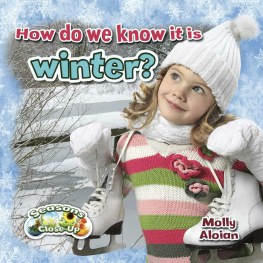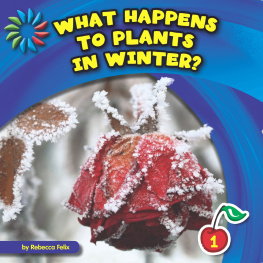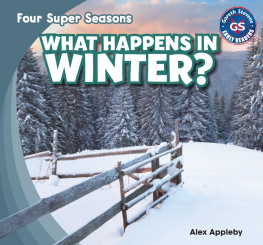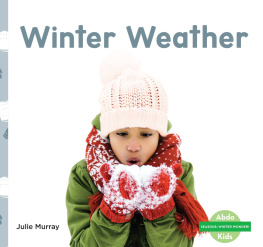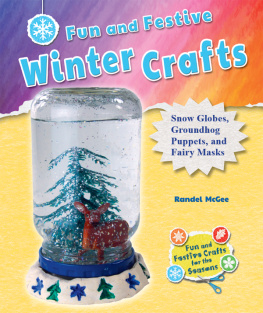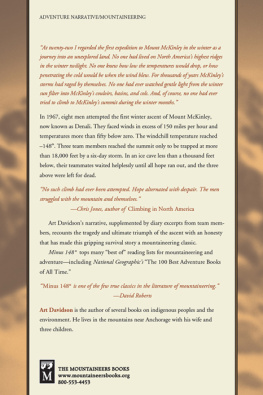ACKNOWLEDGEMENTS
TO MY PUBLISHER FOR recognizing that advances, predominantly in the field of electronics and the measurement of windchill, warranted a second edition.
To Jacqueline Carew and Gayle Alford for their computer assistance.
To Pat Mckenna for advice on the subject of food.
To my editor for her patience and probing queries.
Appendix A
A REFERENCE FOR TRAVELLERS
VEHICLE GUIDE
- Do not carry your sleeping bag in the trunk, where the vehicle is coldest and where you could not get at it if the trunk were damaged or jammed.
- If stranded, use your vehicle as a temporary refuge while you build a snow shelter. If the motor is operable, use the heater to dry any damp clothing. When the engine is running, be sure to have the window open a crack to alleviate any chance of carbon monoxide buildup.
- Any non-running vehicle is a heat sink, offering no insulation from the cold.
- Be sure to make your snow shelter visible from the road where your vehicle is stranded.
- Vehicle seats and cushions offer good insulating pads for the inside of a snow shelter.
- Tires will serve as emergency fuel for a fire. If it becomes necessary to burn them, it is best to add tires to an existing (already burning) wood fire.
- A cigarette lighter can be used to ignite a fire starter.
- The battery can be sparked to ignite a fire starter.
- Flashing of headlights could guide a night-search aircraft.
- Do not abandon your vehicle to walk along the road unless you can see a distant light suggesting habitation a few kilometres away, you are well clothed, the road is not subject to drifting snow, and its edges are visible. It is safer to hole up and wait for someone to find you, and how long you wait will depend on how detailed an itinerary you left with a responsible person prior to your departure. If you must leave your vehicle, make sure to leave a note telling search parties what direction you are taking and the time you left.
- Do not allow snow to bury the vehicle. An all-white vehicle is a handicap. A blue vehicle stands out well because few things in the natural world are that colour.
- Should you not have a signal mirror in your survival kit, try using a vehicle mirror to attract the attention of a search aircraft during a sunny day.
- If you have an electronic means of communication such as a VHF transceiver, personal locator beacon, cell phone, or satellite phone, use it report your situation and give your location. If a member of your party is injured, make sure to call for a medic.
Vehicle Kit
Make sure your vehicle is equipped with the following items:
- PSK
- snow shovel
- axe
- flashlight with alkaline or lithium batteries
- tarpaulin big enough to cover engine hood and reach the ground on both sides
- spare fan belt
- spare fuses
- wheel wrench (preferably star type)
- battery jumper cables (with card showing correct hook-up procedure)
- extra spare wheel if driving along an isolated and unserviced highway
- tow chain and jack-all, which in combination can be used as a come-along (a device offering a mechanical advantage when moving or towing)
- garbage bags (preferably large and blue), which can be used as an emergency shelter roof, snow shelter entrance cover, vapour-barrier clothing, or signal panel
- Thermos (kept topped up with hot, sweet drink)
- first-aid kit (including cushioned mask such as Airway SealEasy, used for sanitary purposes when administering CPR)
- sleeping bag (of winter weight and kept in cab rather than trunk)
- emergency heater (preferably gasoline camp stove and 2 metres, 6 feet, of 10-centimetre, 4-inch, stovepipe with two right-angle elbows, or alternatively a roll of kerosene- or diesel-soaked toilet paper inside a coffee)
- ban ice (methyl hydrate)
- antifreeze
- window scraper
- starting fluid
- several long-burning candles (at least 12 hours combined burn time)
- tool kit (with a minimum of a screwdriver, adjustable wrench, and pliers)
- matches and striker (wood type) or flint and steel
- light lashing cord (50 metres, 165 feet)
- extra clothing and footwear
- road flares
- winter tires (check air pressure before departing)
- insulated pad (for use inside emergency shelter)
- at least two 10 x 10 x 30 centimetre (4 x 4 x 12 inch) wooden blocks
SNOWMOBILE GUIDE
- Always travel in pairs (on separate machines).
- If stranded, it is better to hole up in a snow shelter than to try to walk out. How long you have to wait for rescue will depend on how detailed the itinerary you left with a responsible person was.
- Your discomfort, or your safety, will depend on how familiar you are with survival techniques and how fit you are and how well equipped you are with clothing, survival kit, and tool kit.
- Pocket-sized VHF transceivers, cell phones, personal locator beacons, satellite phones, hand-held GPS, and SPOT personal tracker offer some degree of safety, provided you know how and when to use them. A map and compass are still necessary tools for any wilderness traveller.
- It is your responsibility to understand your machine to the extent that you can replace broken or worn parts in the field. Coincident with a basic knowledge of your engine is an understanding of your machines behaviour in a wide range of snow and terrain conditions.
- Thin ice and overflow pose a very serious threat to the safety of any overlander, especially if you have not taken a particular route before. Make sure to review the information on ice travel in Chapter 2.
Snowmobile Kit
- PSK
- spare drive belt
- spare spark plugs
- spare starter cord
- spare jets for carburetor
- spare bulb for headlight
- spare ignition key
- extra gasoline and two-cycle oil (750 millilitres, 267 fluid ounces)
- methyl hydrate
- compact snow shovel
- light tarpaulin
- axe
- snowshoes
- tool kit (appropriate for your machine)
- flashlight with alkaline or lithium batteries
- first-aid kit
- Thermos (with hot, sweet drink)
- magnetic screwdriver (to retrieve small parts dropped in snow)
- tow rope
- insulating pad
- sleeping bag
LIGHT FIXED-WING AIRCRAFT OR HELICOPTER GUIDE
Your safety in this instance is largely in the hands of the pilot, but that doesnt mean you should not be well equipped and informed of survival techniques.
In winter, even on a day flight, you should have a sleeping bag and a PSK with you.
The pilot should show you where the planes Emergency Locator Transmitter (ELT) is located, as well as the companys survival kit.
Be aware of whether the pilot filed a flight note or a flight plan. The former is more open-ended.
Like in an automobile, the fuselage of an aircraft is a heat sink. If stranded, you should construct an emergency shelter if at all possible. If the aircraft is badly damaged, part of it can be used to make a shelter, especially if there is insufficient snow to construct a proper snow shelter. Cushions and fabric can be used as insulating pads or clothing.
If you are in a remote area, it is best to stay put. A downed or crashed aircraft is hard enough to find, but a person is much harder to spot.
Bush planes and helicopters should be equipped with a survival kit, an ELT, a snow shovel, an axe, and a first-aid kit.
Aircraft Passenger Kit
- PSK
- sleeping bag
- insulating pad
- light tarpaulin (pilot may have one)
- Thermos with hot, sweet drink





